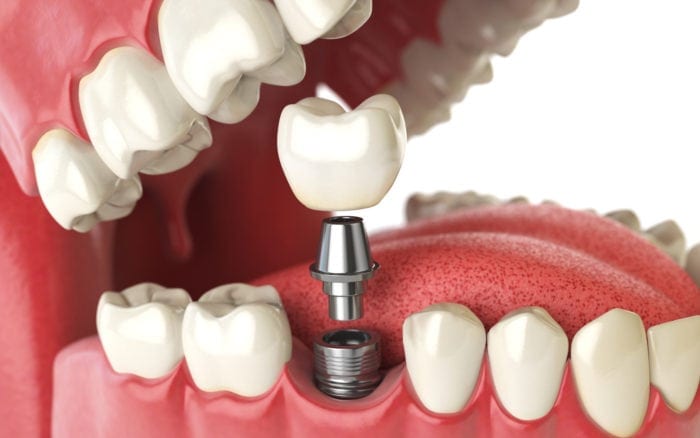A dental implant is usually an external or internal procedure that interfaces with a bone or tooth’s root to serve as an anchor or supporting device for a dental replica or denture. This process is done during the first visit to the dental office. The dental implant will then be fitted into the jawbone or gum. This type of implant is known as a postop dental replica or a direct implant. It is used in dentistry to replace one tooth that was lost.
Before dental implants can be placed into the mouth, the patient will undergo many tests and evaluations to assess his health, possible candidates for this treatment, and other contributing factors to the success of the procedure. The goals of this treatment include: correcting tooth decay, gaining bite strength, and achieving cosmetic improvement. During the initial visit with the orthodontist, the patient and the oral surgeon should work together to plan a treatment strategy. The oral surgeon will discuss the goals and recommend a course of treatment. After determining the best procedure for each patient, the patient and the oral surgeon will collaborate to make sure the goals are met and the patient is healed after surgery.
There are two types of dental implants – osseointegration and traditional prosthetic teeth. Osseointegration is performed in one day; this is considered the more effective procedure because there is no need for anesthesia and it does not take as long to heal. During this one-day procedure, the surgeon removes the wisdom tooth with a drill from each side of the patient’s mouth. The wisdom teeth are then sutured to the top of the cheeks and gum, making sure the osseointegration process is successful. An oral surgeon then inserts the titanium post into each jawbone.
Read More: Reason Why Dental Implants Work So Well
When a dental implant procedure is performed by periodontitis, the implants will be placed at least six months before the start of the periodontal therapy. This allows the prosthetic teeth to become acclimated to the body’s saliva and gums. At least three to four weeks before the first scheduled visit with a dentist, the dentist will determine whether the implants are suitable for the patient. At this time, the dentist will confirm that the implants will be able to prevent infection and that they will fit comfortably within the mouth. He or she will also discuss the recommended course of treatment.
Additional procedures such as crowns and dentures can be completed after osseointegration and before implants are installed. If additional dental procedures are desired, the patient and the periodontitis will work together to determine the best course of treatment. Reputable periodontitis will work with patients to help them achieve their goals and prevent bone loss and other dental issues.
Single Teeth Replacement: After a patient has lost a single tooth, one or more prosthetic teeth can be replaced with a replica of a single tooth. Replacing just one tooth with a tooth implant will allow a person to resume regular oral health care. This will allow the patient to smile with confidence and speak normally. Single teeth implants can also restore a youthful appearance to the face.
Multiple Teeth Replacement: Multiple prosthetic teeth can be replaced in order to treat various conditions and improve oral health. In general, the more teeth a patient needs to replace the higher the cost of dental implants. However, prosthetic implants are an affordable alternative to traditional dentures and bridges, and they offer superior comfort and appearance.
Dental Implants are an effective way to restore function to the mouth and to ease the effects of periodontal disease. Patients suffering from missing teeth or overcrowding in the mouth may be candidates for an implant. Patients may also choose to replace several missing teeth to improve their overall facial appearance. The types of prosthetics that can be used will vary by each patient and their medical history. Patients should consult with their local cosmetic dentist to determine the most suitable prosthetic for their mouth and dental health.
If you don’t have a dentist yet, you can find one by searching for a term like “dentist near me lafayette la” on the internet. Doing so should provide a list of experts you can check out.


 Home
Home










